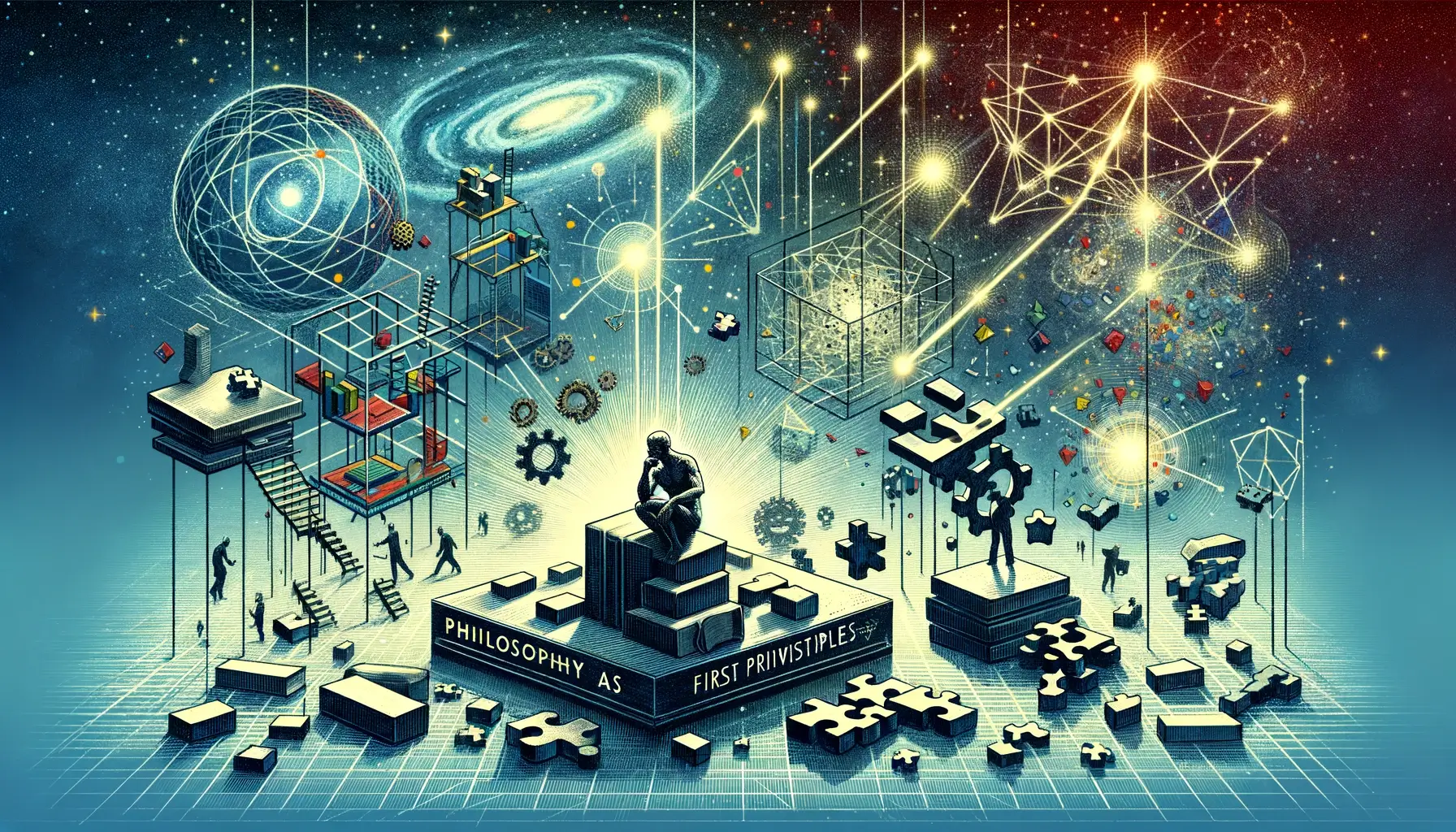 Mastering Visionary Thinking: How to Think Like Elon Musk
Mastering Visionary Thinking: How to Think Like Elon Musk
In an era defined by rapid technological advancements and global challenges, the ability to innovate, adapt, and think big has never been more crucial. Elon Musk, the driving force behind companies like SpaceX, Tesla, and SolarCity, epitomizes this era’s visionary. Musk’s unique approach to problem-solving and business has not only disrupted industries but also inspired millions to rethink what is possible. This comprehensive guide explores the mindset and strategies that underpin Musk’s success, offering a blueprint for those aspiring to think like Elon Musk.
Introduction to Visionary Thinking
How to think like Elon Musk is more than an inquiry into a single individual’s cognitive processes; it’s an exploration of a mindset geared towards innovation, resilience, and the relentless pursuit of goals that seem out of reach to most. Musk’s approach to challenges—whether it’s making human life multi-planetary, revolutionizing transportation, or advancing sustainable energy—provides invaluable lessons for anyone looking to make an impact in their personal or professional lives.
 Elon Musk’s Cognitive Frameworks: An In-depth Analysis
Elon Musk’s Cognitive Frameworks: An In-depth Analysis
The Foundation of First Principles Thinking
At the core of Musk’s philosophy is first principles thinking, a methodology derived from physics. It involves breaking down complex problems into their most basic, foundational elements and reassembling them in new, innovative ways. This approach challenges conventional wisdom and analogical thinking, encouraging a deeper questioning of the status quo.
To better understand how to think like Elon Musk, one must practice deconstructing problems and situations to their true essence, free from preconceived notions or the influence of past experiences. This exercise not only sharpens critical thinking skills but also opens up new avenues for creative solutions. To dive deeper into first principles thinking, I recommend reading this article by Wait But Why, which provides an in-depth look at Musk’s thought process.
Continuous Learning: The Multidisciplinary Approach
Musk’s educational background in physics and economics is complemented by his voracious reading habits, spanning a wide range of subjects from engineering to philosophy. This multidisciplinary approach enriches his understanding of the world, enabling him to draw connections between seemingly unrelated fields.
Embracing how to think like Elon Musk means fostering a love for learning, not just in areas directly related to one’s field, but across a broad spectrum of disciplines. Engaging with diverse sources of knowledge can stimulate innovative thinking and lead to groundbreaking ideas that transcend traditional industry boundaries. For those interested in Musk’s reading list and learning habits, this resource offers a comprehensive look.
Risk Tolerance and the Embrace of Failure
One of Musk’s most defining characteristics is his acceptance of risk and failure as part of the innovation process. His ventures have faced numerous setbacks and criticisms, yet these moments are often seen as stepping stones rather than obstacles.
Understanding how to think like Elon Musk requires a reassessment of our relationship with failure. Viewing setbacks as opportunities for learning and growth is essential for navigating the uncertain path of innovation. This perspective fosters resilience and a willingness to pursue ambitious projects despite potential risks.
Applying the Musk Mindset: Practical Strategies
Breaking Down Visionary Goals into Actionable Steps
Musk’s ability to set and pursue lofty ambitions—such as colonizing Mars or transitioning the world to sustainable energy—is notable. However, these grand visions are underpinned by a pragmatic approach to goal-setting. Musk breaks down these overarching objectives into smaller, manageable milestones, making the pursuit more structured and attainable.
To incorporate how to think like Elon Musk into personal goal-setting, start by defining a visionary end goal. Then, reverse engineer the process by identifying the series of steps necessary to reach that goal, setting timelines and metrics for each stage. This method not only clarifies the path forward but also provides motivation and a sense of progress.
The Interdisciplinary Edge: Leveraging Cross-Domain Knowledge
Musk’s innovations often involve applying principles from one field to solve problems in another. For example, SpaceX has revolutionized rocket manufacturing and launch operations by adopting methodologies from manufacturing and software development.
How to think like Elon Musk in this context means cultivating the ability to see beyond the confines of specialized knowledge, exploring how ideas and techniques from different domains can intersect to create novel solutions. This approach not only enhances problem-solving capabilities but also encourages a more holistic understanding of complex challenges.
The Iterative Process: Learning Through Doing
Rapid experimentation and iteration are hallmarks of Musk’s strategy. His companies continually test, learn from failures, and refine their approaches. This iterative cycle accelerates learning and innovation, ensuring that each step brings them closer to their ultimate objectives.
Adopting how to think like Elon Musk involves embracing a mindset of experimentation. Whether developing a new product, improving a service, or learning a new skill, the iterative process of trial, error, and refinement is crucial. It encourages adaptability and resilience, key traits for anyone looking to thrive in today’s fast-paced world.
Building a Culture of Innovation
Empowerment and Ownership
A key aspect of Musk’s leadership is his emphasis on empowering individuals within his organizations. By encouraging ownership and decision-making at all levels, he fosters a culture of accountability and innovation. This environment allows for the free flow of ideas and challenges employees to think and act beyond their immediate roles.
To mirror how to think like Elon Musk in leadership, cultivate an atmosphere where questioning, experimentation, and initiative are encouraged. Empower those around you by delegating responsibility and supporting their decisions. This approach not only accelerates innovation but also builds a more engaged and motivated team.
 Open Communication and Collaboration
Open Communication and Collaboration
Transparent communication is another pillar of Musk’s innovative culture. By ensuring that information flows freely across all levels of the organization, he creates an environment where feedback is valued, and collaboration is the norm.
Incorporating how to think like Elon Musk into team dynamics means prioritizing open dialogue and cross-functional collaboration. Encourage teams to share insights, challenges, and successes openly. This openness fosters a sense of community and collective purpose, driving forward the mission of the organization.
Leading by Example: Dedication and Work Ethic
Musk’s personal commitment to his companies’ visions is undeniable. His hands-on involvement and dedication serve as a powerful example to his employees, inspiring them to commit fully to their work.
How to think like Elon Musk in personal conduct involves demonstrating a strong work ethic and a deep commitment to your vision. Leading by example, especially during challenging times, can inspire and motivate others to follow suit, creating a powerful ripple effect throughout an organization or community.
Conclusion: The Path to Thinking Like Elon Musk
Emulating Elon Musk’s way of thinking requires a multifaceted approach, combining a rigorous analytical framework with a broad, interdisciplinary perspective and a resilient, iterative mindset. While the journey to thinking like Musk involves continuous learning and growth, the principles outlined in this guide provide a solid foundation for anyone aspiring to innovate and make a significant impact in their field.
How to Think Like Elon Musk! Your Visionary Journey Begins Now
We invite you to reflect on the strategies and insights shared in this guide. How will you apply the principles of how to think like Elon Musk to your challenges and ambitions? Share your thoughts and plans in the comments below. Join a community of forward-thinkers committed to transforming their visions into reality, inspired by one of the most innovative minds of our time.
Elon Musk’s Key Achievements Timeline
1995: Co-founds Zip2 Corporation, a web software company providing business directories and maps for newspapers.
1999: Sells Zip2 to Compaq for approximately $307 million, Musk’s share was $22 million.
1999: Co-founds X.com, an online payment company, which later becomes PayPal.
2002: Sells PayPal to eBay for $1.5 billion in stock, of which Musk received $165 million.
2002: Founds Space Exploration Technologies (SpaceX) to reduce space transportation costs and enable Mars colonization.
2004: Joins Tesla, Inc. (then Tesla Motors) as chairman of the board, later becoming CEO and product architect.
2008: SpaceX’s Falcon 1 becomes the first privately developed liquid-fueled rocket to reach orbit.
2010: Tesla goes public, raising $226 million in its initial public offering.
2012: SpaceX’s Dragon spacecraft docks with the International Space Station, a first for a commercial spacecraft.
2015: Announces the creation of OpenAI, a non-profit artificial intelligence research company.
2015: Unveils Tesla Powerwall, aimed at residential electricity storage.
2016: Acquires SolarCity, integrating it into Tesla’s operations.
2016: Presents the Hyperloop concept for high-speed transportation.
2018: Launches the Tesla Roadster into space aboard the Falcon Heavy rocket’s inaugural flight.
2020: SpaceX sends astronauts to the International Space Station, a first for a private company.
Post-2021 Achievements
[Year]: [Achievement Description]
2022: SpaceX’s Starship successfully completes its first orbital test flight, marking a significant milestone towards Mars colonization.
2023: Tesla launches its new Model Q, an affordable electric vehicle aimed at mass-market adoption, revolutionizing the electric vehicle industry.
Continuing Innovations
Elon Musk’s work continues to influence various industries, including telecommunications (Starlink), infrastructure (The Boring Company), and artificial intelligence (Neuralink and OpenAI), among others.
FAQ Table
| Questions | Answers | |
|---|---|---|
| Introduction: The Visionary Blueprint | What makes Elon Musk a visionary? | Elon Musk is considered a visionary due to his groundbreaking work in electric vehicles, space exploration, and sustainable energy, along with his bold visions for the future of humanity. |
| The Cognitive Blueprint of Elon Musk | How does Elon Musk approach problem-solving? | Musk uses first-principles thinking, breaking down problems to their fundamental truths and building innovative solutions from the ground up. |
| Adopting First Principles Thinking | What is first-principles thinking? | First principles thinking involves deconstructing complex problems to their basic elements and reassembling them from the ground up for innovative solutions. |
| Embracing the Learning Feedback Loop | How does continuous learning affect Musk’s innovation? | Continuous learning allows Musk to adapt and refine his ideas and strategies, contributing to his success in multiple industries. |
| Risk Tolerance and Resilience | How does Elon Musk handle failure? | Musk views failure as a necessary step towards innovation and success, demonstrating high risk tolerance and resilience in the face of setbacks. |
| From Vision to Reality | How does Musk turn his ideas into reality? | Musk sets ambitious goals, applies cross-disciplinary knowledge, and uses iterative innovation to turn his visionary ideas into reality. |
| Strategic Goal Setting | Why is goal-setting important to Musk’s process? | Strategic goal setting allows Musk to outline his vision into manageable tasks, facilitating progress towards his ambitious objectives. |
| Cross-Disciplinary Application | How does Musk apply knowledge across fields? | Musk applies concepts from one domain to solve problems in another, fostering innovation through a cross-disciplinary approach. |
| Iterative Innovation | What role does iteration play in Musk’s companies? | Rapid iteration enables Musk’s companies to quickly learn and improve, accelerating the development of groundbreaking technologies. |
| Fostering a Culture of Innovation | How does Musk encourage innovation at his companies? | Musk fosters a culture of innovation by empowering teams, encouraging open communication, and leading by example with a hands-on approach. |
| Conclusion: The Path to Visionary Thinking | What can we learn from Elon Musk’s thinking approach? | We can learn the importance of first-principles thinking, embracing risk, continuous learning, and setting strategic goals to achieve visionary outcomes. |
Expand your reading
SMART Goals – George T. Doran’s Method for Setting Clear and Achievable Goals
The 2 Minute Rule – David Allen’s (popularized) Trick to Overcome Procrastination and Start Tasks
The Science of Concentration in The Art of Focus
Master Your Knowledge – Strategies for Personal Knowledge Management
Unlocking the Potential of Grid Trading Bot for Automated Profits

 Mastering Visionary Thinking: How to Think Like Elon Musk
Mastering Visionary Thinking: How to Think Like Elon Musk Elon Musk’s Cognitive Frameworks: An In-depth Analysis
Elon Musk’s Cognitive Frameworks: An In-depth Analysis Open Communication and Collaboration
Open Communication and Collaboration